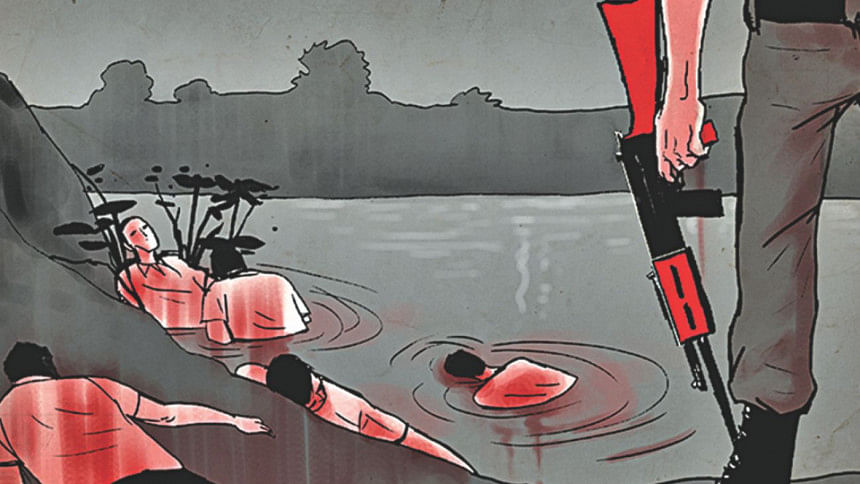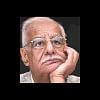We have learnt nothing from these tragedies

The Hashimpura massacre that took place on May 22, 1987, was as deep a tragedy as the anti-Sikh riots in 1984. Both minorities have not allowed the wounds, which remind them of the atrocities committed against them, to heal. The perpetrators of the Hashimpura massacre, the Provincial Armed Constabulary (PAC) from the UP Police, are hoping that the dust would settle down sooner or later, and the nation would consider the tragedy as an ugly part of history, and move on.
I remember the whole thing vividly. After hearing of the killings, I visited Meerut. At the outskirts of the city, on my return, some people stopped me and pointed towards the Hashimpura mohalla, which they said was the scene of the deliberate, blatant killing of 42 Muslims by the PAC. To my horror, I found some bodies floating in canals, and some even floated in the River Hindon. This, I was told, was a premeditated murder.
The story goes that a group of men were rounded up by the Army and the police from the largely Muslim Hashimpura mohalla in Meerut and handed over to the PAC. One such truck of men was taken to the banks of a canal, and shot at close range. Forty-two died, in perhaps the single largest custodial killing in the history of independent India. But a closer look at the events leading to that tense afternoon in Meerut 30 years ago, offers a glimpse into a largely unreported dimension of the motives behind the massacre.
The most commonly accepted motive, mentioned in the charge-sheet filed by the CID of the UP police, is the alleged assault on the PAC the same day and loot of two rifles belonging to the force. "Upon that, on 22.05.1987, a search for illegal arms in Mohalla Hashim Pura, Meerut was launched," the charge-sheet claimed. But a less explored dimension, also mentioned in the charge-sheet, was the death of a young man named Prabhat Kaushik, who was killed by a stray bullet as he stood on the terrace of a building abutting Hashimpura.
Experts, including some police personnel, described the killings as among India's worst incidents of custodian violence. The trial began only in 1996 and a couple of years ago all accused were cleared of all charges by a trial court in what activists have called a grave miscarriage of justice.
Naturally, the reaction from the survivors or, for that matter, the relatives of those killed was along the expected lines because it had taken 28 years for a judgment, with all the accused being allowed to go scot-free. Many families are not hopeful of a breakthrough and say that the investigation was shoddy.
In fact, the then Meerut Superintendent of Police, Vibhuti Narain Raio, who has written a book on the incident says: "It took me nearly five to six years to realise that my belief that the killers would receive exemplary punishment for such a heinous act would remain just that – a mere belief. As time flew by, it became evident that the Indian state was just not interested in penalising the guilty. All the stakeholders of the state kept playing hide but not seek with their responsibilities and many shielded themselves behind criminal negligence. And it worked for them."
Even today, according to reports, the Hashimpura locals are traumatised by that day's incident and say that the PAC was organised and planned. The locality is almost U-shaped, making it difficult for people to flee, and the constant hum of handloom machines is the daily companion of locals there. Most houses are rundown with flaking paint, as if locals have given up hope of a better life.
This should remind us of the Jalianwala Bagh tragedy where over 1,500 innocents were killed within a walled boundary. (Prince Phillip accompanying his wife, the Queen, to Jalianwala Bagh after the tragedy, remarked that the number was exaggerated!) Subsequently, when I met General O'Dyer and mentioned the killings, he did not show even an iota of remorse.
The description of events by the survivors at Hashimpura is heartrending. According to one account, hundreds of men were sent to prison for weeks where they were interrogated and beaten up because they were Muslims. Some people were dragged out of their houses and taken to the police station. According to eye-witness accounts, the killings happened in two phases - the first at Gang Canal of Muradnagar and the second at Hindon.
During the anti-Sikh riots in 1984, in the wake of Mrs Indira Gandhi's assassination, Delhi witnessed killings of over 3,000 Sikhs, the officially announced estimate. The number could be more. The perpetrators included top Congress bigwigs. Fingers were pointed even at Rajiv Gandhi, at whose behest allegedly the deployment of the Army was delayed to allow the rioters a free-hand. The cases which were closed are now being reopened. But no one has been punished so far. The connivance of authorities at that time has allowed the evidence to rub off.
Many victims of the 1984 riots are still seeking rehabilitation. There is no difference in the case of Hashimpura either. The survivors are still struggling for normalisation, hoping against hope that the Delhi High Court, where an appeal is pending, would get them justice sooner than later.
My experience dictates that any national tragedy of such scale is usually remembered by the public for some time before receding into the background of history. The past is revived when another tragedy takes place. There doesn't seem to be any permanent solution. I have been a mute witness to innumerable riots where the complicity of police is apparent.
Incidents like the one that took place in Hashimpura can only be stopped when the two communities come to realise that their animosity led to the partition of the country. This cannot be repeated; continued enmity will put in peril the ethos of democracy and secularism in the country. Efforts should be made whereby minority communities in the country feel like equal partners and enjoy all the facilities guaranteed by the Constitution to all citizens of the country.
The writer is an eminent Indian columnist.

 For all latest news, follow The Daily Star's Google News channel.
For all latest news, follow The Daily Star's Google News channel. 



Comments